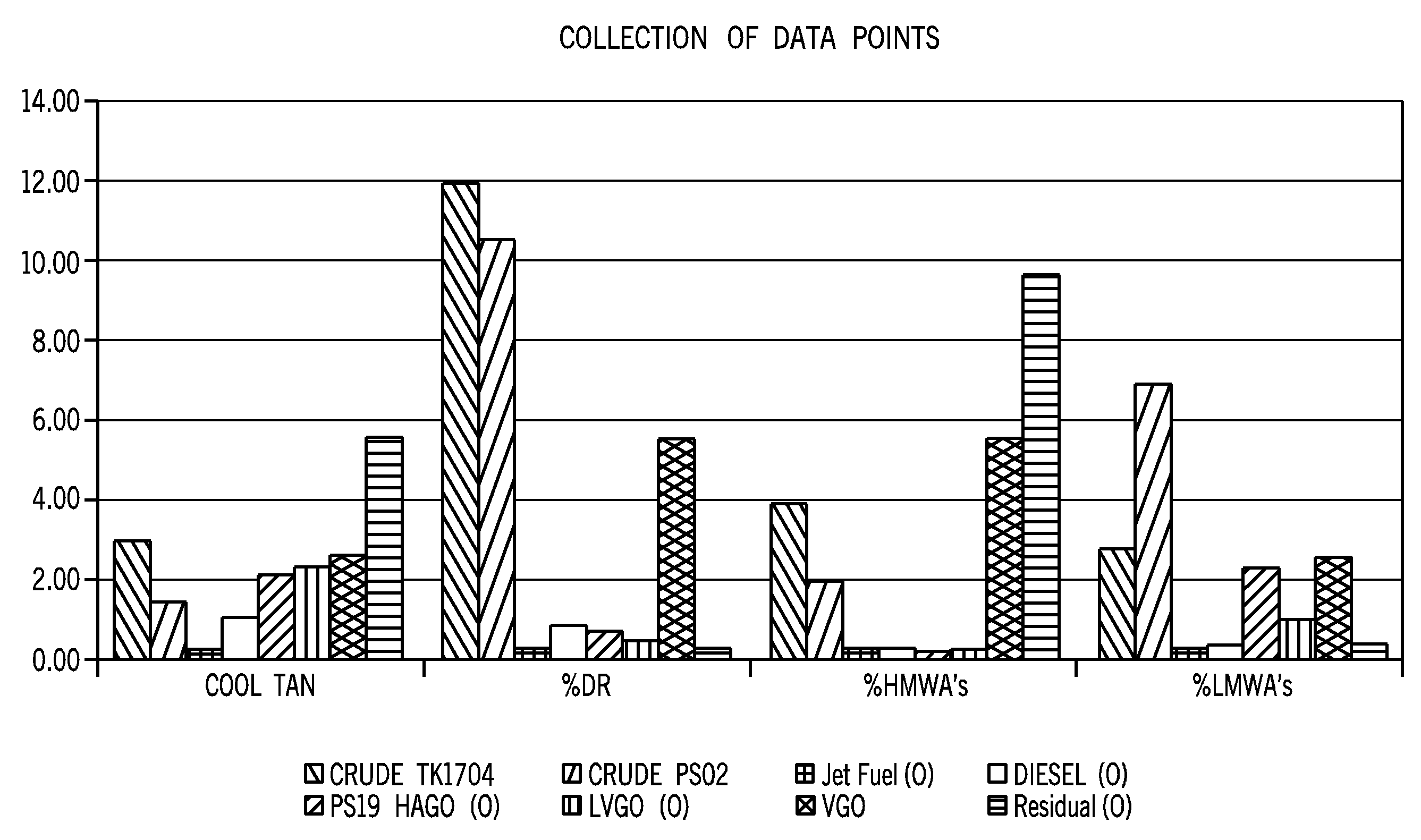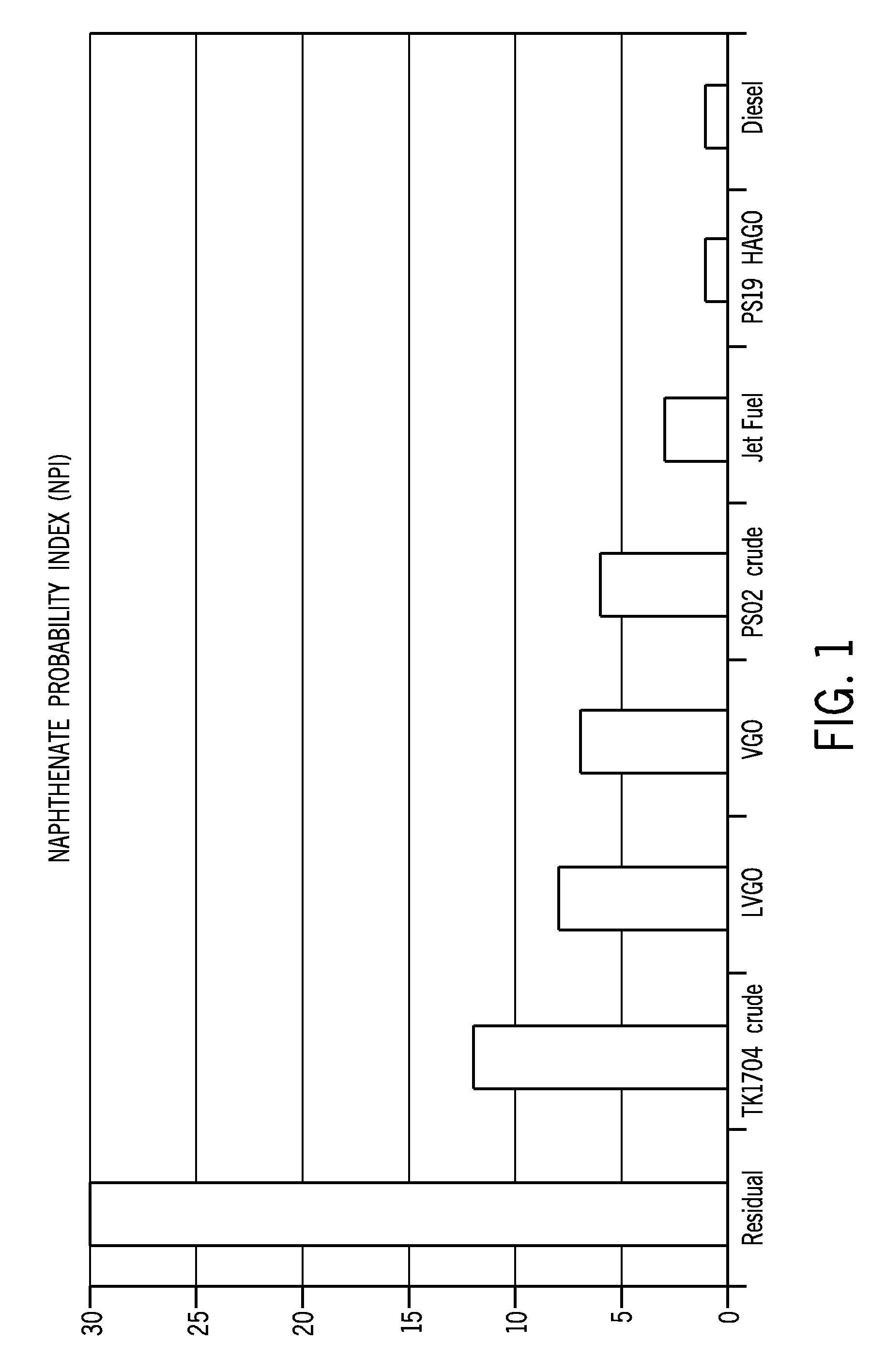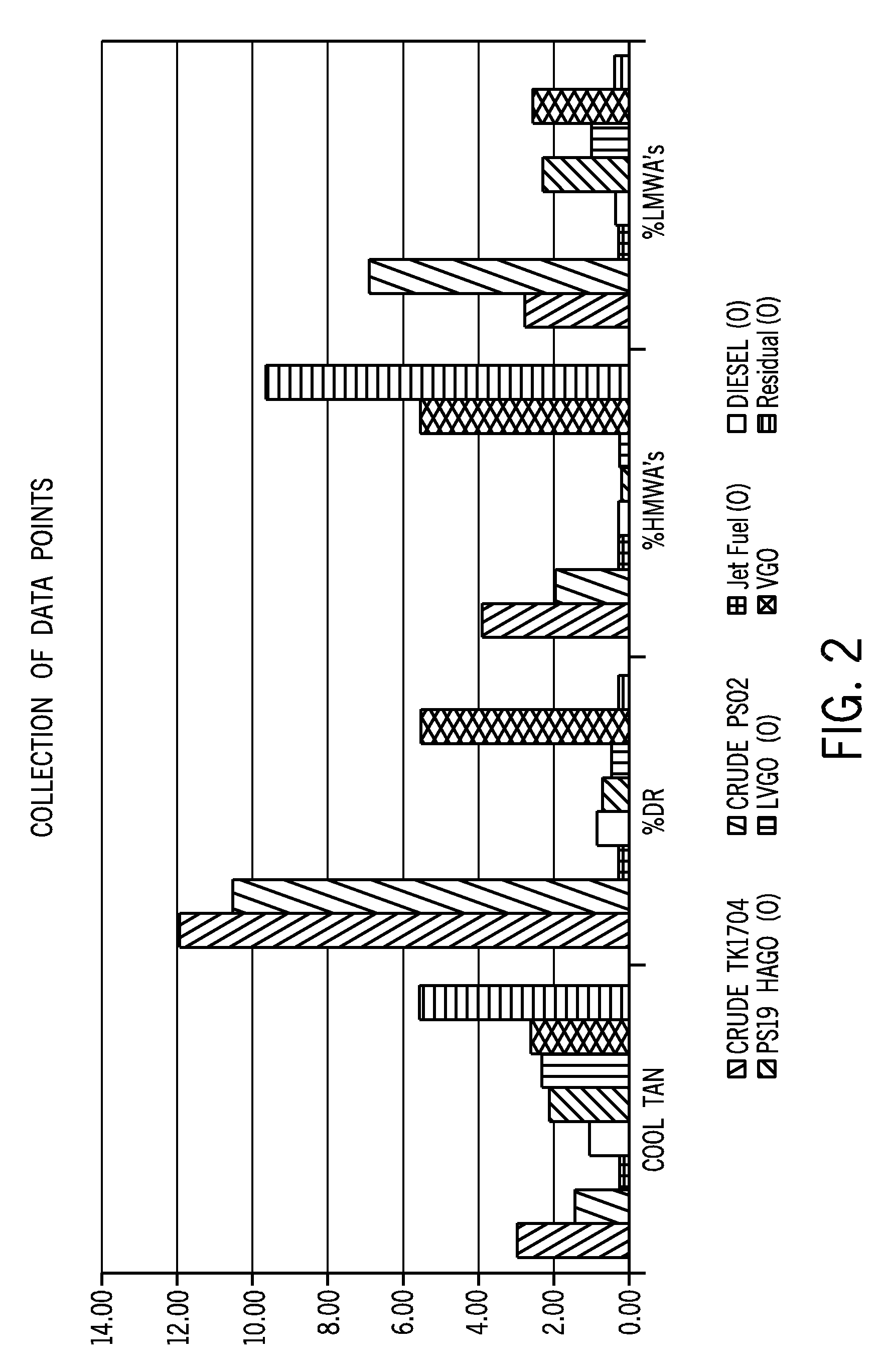Method of Screening Crude Oil for Low Molecular Weight Naphthenic Acids
a technology of naphthenic acid and crude oil, which is applied in the field of screening crude oil, can solve the problems of emulsion and corrosion problems, severe corrosion of bottom heat exchangers, etc., and achieve the effect of simple learning and running
- Summary
- Abstract
- Description
- Claims
- Application Information
AI Technical Summary
Benefits of technology
Problems solved by technology
Method used
Image
Examples
example 1
Analysis of Crude Oil for Naphthenic Acid Content
[0132] Initially, the crude oils under test were stabilized gravimetrically utilizing nitrogen-purged heating to remove light ends greater than 70° C., and the water content was separated by the standard heated centrifuge method.
[0133] A stainless steel metal cage was constructed to hold the dialysis sack containing the sample and locked in position such that the sack does not expand to bursting. The dimensions of the metal cage were chosen such that several metal cages containing samples can be stacked to fit the one liter dialysis reservoir. This then meant that approximately eight oil samples could be dialyzed in one distillative reflux dialysis experiment. Samples were initially stabilized by gently heating up a known weight of sample under a nitrogen blanket to prevent oxidation. Each sample undergoes a heat-cool procedure to constant weight. The weight loss of volatiles is recorded and used in a correction procedure. The free ...
example 2
Determination of the Ratio of High Molecular Weight to the Low Molecular Weight Naphthenic Acids in Crude Oil Samples
[0152] The example shows the evaluation of the fouling tendencies of two crude oils and the product streams from the pipestill.
[0153] The following samples were analyzed: 1. Crude Oil; 2. Crude Oil to Desalter (PS02); 3. Raw Jet Fuel; 4. Diesel Feed to E120; 5. Vacuum Gas Oil (VGO), VAC SS2 to catalytic feed hydrotreating unit (CFHU); 6. LGVO, VAC SIDE, STREAM 1 to Fluid Catalytic Cracking Unit (FCCU); 7. HAGO; and 8. Residual, vacuum pipe still bottoms-pitch.
[0154] The samples were subjected to four types of analyses in this part of the project for fouling and corrosion interpretations. The original samples were analyzed for TAN values using the normal ASTM D664 technique, then the bottoms residue (BR) was separated from the dialysate residue (DSR) and both fractions analyzed for high and low molecular weight naphthenic acids. The original samples were also analyz...
PUM
 Login to View More
Login to View More Abstract
Description
Claims
Application Information
 Login to View More
Login to View More - R&D
- Intellectual Property
- Life Sciences
- Materials
- Tech Scout
- Unparalleled Data Quality
- Higher Quality Content
- 60% Fewer Hallucinations
Browse by: Latest US Patents, China's latest patents, Technical Efficacy Thesaurus, Application Domain, Technology Topic, Popular Technical Reports.
© 2025 PatSnap. All rights reserved.Legal|Privacy policy|Modern Slavery Act Transparency Statement|Sitemap|About US| Contact US: help@patsnap.com



